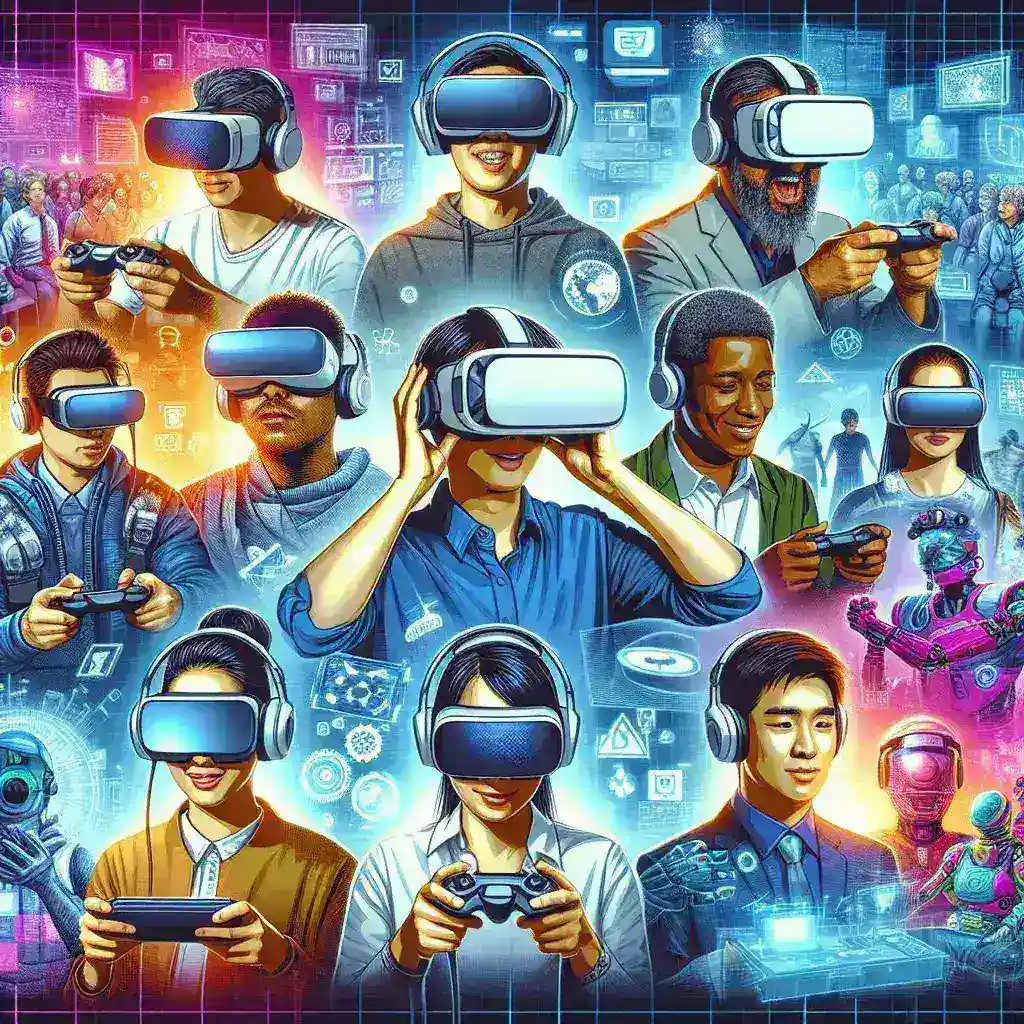Introduction to Virtual Reality in Entertainment
Virtual reality (VR) has rapidly advanced over the last decade, evolving from a niche technology into a groundbreaking force in the entertainment industry. It offers immersive experiences that captivate audiences and redefine how we engage with games, films, and other forms of digital content. This article explores the transformative power of VR in entertainment and discusses why it is poised to become the next big thing.
The Evolution of Virtual Reality
The concept of VR isn’t new; it dates back to the 1960s with the invention of the Sensorama and the first head-mounted display. However, it wasn’t until recent years, with advancements in technology and the reduction in costs, that VR became accessible to the general public. Today’s VR platforms, such as Oculus Rift, HTC Vive, and PlayStation VR, provide high-quality immersive experiences that are reshaping the entertainment landscape.
Key Components of Virtual Reality
- Head-Mounted Displays (HMD): These devices, worn on the head, provide visual immersion by displaying computer-generated environments directly in front of the user’s eyes.
- Motion Tracking: Advanced sensors and cameras track users’ movements, allowing them to interact with the virtual environment in real-time.
- Audio Technology: Spatial audio enhances realism, enabling users to hear sounds from different directions within the virtual space.
Impact of Virtual Reality on Gaming
Gaming has been one of the primary drivers of VR adoption. By providing unparalleled levels of immersion and interactivity, VR games offer experiences that traditional gaming cannot.
Immersive Gameplay
VR games allow players to step into the shoes of their characters, creating a profound connection with the game world. Titles like Beat Saber, Half-Life: Alyx, and Boneworks have showcased how VR can enhance gameplay mechanics, making them more engaging and thrilling. Players can physically move, dodge, and interact with their environment, leading to a more fulfilling gaming experience.
Social Interaction in Gaming
Virtual reality also transforms how players interact with one another. Multiplayer VR experiences foster social engagement by allowing users to communicate and collaborate as if they are in the same physical location. Platforms like VRChat and Rec Room create virtual spaces where players can hang out, play games, and socialize, simulating real-life interactions.
Virtual Reality in Film and Storytelling
While gaming leads the charge, virtual reality is also making waves in the film industry. Filmmakers are exploring innovative ways to tell stories through immersive experiences.
New Narrative Techniques
VR allows viewers to become active participants in the story. Instead of being passive spectators, audiences can explore environments, interact with characters, and influence outcomes. Productions like The Invisible Hours and Wolves in the Walls exemplify how VR can create unique storytelling experiences.
Virtual Reality Cinemas
Virtual reality cinemas are emerging, enabling viewers to enjoy films in immersive settings. These cinemas allow consumers to watch films in virtual theaters, providing a novel social experience reminiscent of traditional movie outings.
The Role of Virtual Reality in Live Events
The COVID-19 pandemic accelerated the adoption of VR in live events, as in-person gatherings became impossible. Virtual reality provided a solution, allowing people to attend concerts, festivals, and conferences from the safety of their homes.
Virtual Concerts and Festivals
Artists like Travis Scott and Lil Nas X have hosted virtual concerts in immersive environments, reaching millions of fans worldwide. These events break down geographical barriers and provide a unique experience that standard live performances cannot offer.
The Future of Virtual Reality in Entertainment
The potential of virtual reality in entertainment is vast. As technology continues to advance, the possibilities for immersive experiences will grow exponentially.
Integration with Augmented Reality
The future may see a blending of virtual reality and augmented reality (AR). This convergence can lead to novel experiences that enhance both gaming and film. For example, imagine attending a live sports event where AR overlays enhance the game with real-time statistics and player insights.
Accessibility and Affordability
As VR technology becomes more affordable and user-friendly, a larger audience can enter the realm of virtual entertainment. Developers are focused on creating accessible VR experiences that cater to various demographics, paving the way for widespread adoption.
Challenges Facing Virtual Reality
Despite its potential, several challenges need to be addressed to maximize VR’s impact on entertainment.
Technical Limitations
Current VR technology, while impressive, still has limitations, such as the need for robust hardware and potential motion sickness for some users. Ongoing advancements aim to create more comfortable and seamless experiences.
Content Creation
The need for high-quality, engaging VR content is essential for driving adoption. As the market expands, more developers will need to invest time and resources to create compelling VR experiences.
Conclusion: The Future Is Bright
Virtual reality is on the verge of revolutionizing the entertainment industry. With its capacity to create immersive and interactive experiences, VR has the potential to redefine gaming, filmmaking, and live events. As technology continues to evolve and accessibility increases, virtual reality will undoubtedly become the next big thing in entertainment.




